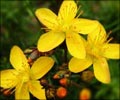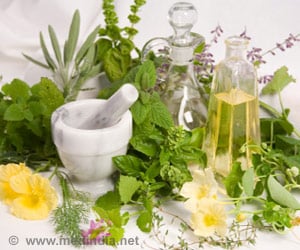- The Flower Workshop in psychosocial rehabilitation: a pilot study - (https://www.ncbi.nlm.nih.gov/pubmed/19148821)
Flowers in Relation to Our Health
Get happy and healthy with the flower power. Drink the juice of pomegranate flowers to manage your diabetes. Reach for that bunch of gerbera when you are down. Declare your first love with lilacs.
Flowers are associated with health and wellness from all perspectives – be it Western medicine or Eastern medicine, homeopathy or naturopathy.

As early as 1000A.D, Avicenna, a disciple of Aristotle, used color and flowers to treat diseases. He found that the color red ‘moved the blood’ and the color blue or white cooled it. He also found that yellow reduced pain and inflammation. He started prescribing red flowers extract to cure blood disorders and yellow flowers to cure liver disorders.
The use of flowers in Ayurveda is even older. This 5000-year-old Indian traditional medicine uses medicinal flowers and their extracts to treat diseases ranging from hair loss to stomach disorders to even cancer. For example, the beautiful yellow flowers of Cassia fistula (Amaltas) not only give an aesthetic value to the area they are grown in, they are also used to treat stomach infection in Ayurvedic medicine. The flowers also exhibit anti-bacterial activity. Following are a few other flowers that are therapeutic.
- China rose (Hibiscus) – Chewing flowers of hibiscus helps cure mouth ulcers. Further, a paste of these flowers applied to the scalp stops hair loss and baldness.
- Neem (Azadirachta indica) – A fine paste of flowers applied to boils and wounds relieves the burning sensation and heat.
- Juhi (Jasminum auriculatum) – This flower from the jasmine family is powdered and given to relieve acidity, stomach ulcer and mouth ulcer.
- Parijat (Nyctanthes arbor-tristis) – The flowers of coral jasmine are known to treat arthritis. The flowers are also used in face packs for glowing skin.
- Swallow-wort/Aak (Calotropis procera) – The flower of aak is one of the best medicines to remove phlegm. The flowers wrapped in betel leaves are also used to treat jaundice.
- Pomegranate (Punica granatum) – The juice from pomegranate flowers is used as a drink to relieve bile related eruptions on the body. A research study published in the Journal of Medicinal Food has shown that flowers and juice of pomegranate have hypoglycemic activity. The pomegranate compounds associated with anti-diabetic effects include oleanolic, ursolic and gallic acids.
Flowers having medicinal properties are used not only in Ayurveda but in other forms of medicines as well. The dried flowers and buds of the Japanese pagoda tree (Sophora japonica) – a small tree or shrub of the pea family – is a useful medicinal herb in China, Japan and Korea. They are used to treat bleeding hemorrhoids and hematemesis (the vomiting of blood). A study published in the journal Chinese Medicine found that flowers of Sophora japonica could also reduce cerebral infarction partly as a result of its anti-oxidative and anti-inflammatory properties. A cerebral infarction is the ischemic kind of stroke due to a disturbance in the blood vessels supplying blood to the brain.
Numerous homeopathic medicines are prepared from flowers or buds of plants. The homeopathic preparations made from fresh or dried flower heads of Arnica are used to treat sore muscles and bruises caused by overexertion or trauma. In the same way, the homeopathic medicine pulsatilla is prepared from the meadow anemone flower (pasque flower). It is a remedy for disorders varying from colds and coughs to digestive and gynecological problems.
The medicinal value of flowers is not just limited to taking the flowers as pills or in the form of juice. Any work associated with flowers is also said to be therapeutic. Oshibana in Japanese means ‘pressed plant’ and working with pressed flowers to provide a sense of well-being by dissolving negative energy blocks (qi or chi) is called the ‘Oshibana therapy’. Apart from treating depression, this therapy has shown to have major health benefits including improving ulcers, migraine, stomach disorders, heart disease and even cancer. According to Suzanne Faith, a psychiatric nurse practicing Oshibana therapy, ‘Flowers combine the power of color and form. When flowers are placed in balanced floral patterns designed to strengthen body, mind and spirit, they can become powerful symbols to aide in healing when others have failed’.






